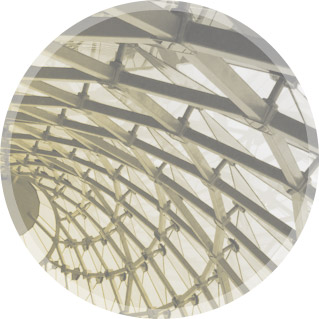University of Miami
School of Architecture
The University of Miami School of Architecture's mission is founded in the faculty commitment to community and its focus on the city as a work of art and architecture. The School affirms the essential need to design environmentally responsible buildings that promote social integration and economic sustainability, and support life comfortably without reliance upon extravagant use of land and energy which adversely affect our ecosystems. The School prepares students for professional leadership and lifelong learning in architecture, urbanism and related fields. The faculty preserves and develops knowledge for the profession through research and practice. Faculty and students share knowledge locally and internationally through community service. They promote building and community design goals of environmental responsibility, social equity and economic sustainability.
http://www.arc.miami.edu/
Setting
George Merrick, the visionary founder of Coral Gables, one of America's most notable garden cities, inspired the founding of the School in Architecture in the mid-1920s when he assembled the first planners and designers of Coral Gables and encouraged their association with the newly-formed University of Miami, a private, independent, non-sectarian institution. That initial and close association of architects, planners, landscape architects and artists, working within the context of experimental towns and cities, remains a hallmark of the school today. The School of Architecture's location within the metropolitan Miami area provides an outstanding laboratory for research and advanced study of architecture and urban design. Its main campus, at the heart of the Garden City of Coral Gables, was designed in 1944-45 by Robert Law Weed and Marion Manley, the first licensed female architect in the State of Florida, and continues to grow with new buildings by Michael Dennis, Robert Stern, Leon Krier, Arquitectonica International, and others. The challenges of conservation and development are intense in one of the nation's fastest growing urban areas. These challenges result in an increasing demand for skilled professionals. In Downtown Miami and Brickell many high-rise apartment buildings have surged in the last ten years, more than quintupling the resident population; two new museums are in construction along the Bay by Swiss architects Herzog & De Meuron (Miami Art Museum) and the British firm of Nicolas Grimshaw (Miami Science Museum). Further to the north are Wynwood and the Design District, two rapidly developing areas for the arts, education and quality retail for construction and interior design (Art Basel); on the other side of Biscayne, Miami Beach Bay is the epicenter of public life anchored by a strong preservation movement which has generated the establishment of ten historic districts with buildings ranging from the early 1920s to the late 1960s. With the opening of the New World Symphony campus designed by Frank Gehry and its adjacent park by Dutch landscape urbanists West 8 (Adriaan Geuze), the award-winning mixed-use parking garage by Herzog & De Meuron, and other projects by Enrique Norten and Hargreaves, the city has become a point of attraction for contemporary architecture as well. The cosmopolitan nature of Miami provides a unique resource for the school in both the study and application of contemporary design issues. As the emerging continental capital of the Caribbean and Latin America, Miami offers international opportunities unique in the United States. The resources of a large research university also provide a broad range of cross-disciplinary opportunities. Selected study programs, honors programs, and the Residential College system, in which undergraduate students live in a college with faculty masters and associates, reinforce the school's effort to build a personal, attentive and responsive environment which nurtures and develops each student's unique abilities and contributions. Beyond the academic forum, the School of Architecture, uses its extensive professional contacts and alumni network, in a career placement to assist students with summer and post-graduate internships and employment.
School Philosophy
School of Architecture programs are based upon the belief that architecture is a civic art, placing the architect squarely at the vital core of society, central to an active citizenry. This view of architectural education encourages each student to develop the capacity to participate in the public role of architecture and to respond creatively to the inevitable changes that characterize modern life. Themes of urbanism, tradition and innovation in architecture intertwined with the knowledge of related disciplines establish a context for analysis and synthesis in the seeking of solutions for the enhancement of the physical environment. Small classes, individual mentorship, and internationally recognized faculty, dedicated to both teaching and advancing the profession, characterize the School of Architecture. Numerous opportunities for research, particularly in the relationship of architecture to the environment and urban context, promote collegial associations among faculty and students and attract numerous visiting architects and scholars from around the world. Given Miami's position in the southeastern United States and its proximity to the Caribbean and Latin America, the Master of Science intends to pursue an intense international North-South agenda that will allow students and faculty to develop a deeper understanding of architecture, urbanism and cultures in an increasingly globalized world. The program will be building on many years of experience and relationships with architects and communities within the Americas, including Colombia, the Dominican Republic, Haiti, Mexico, Argentina, Chile and Brazil. The program offers a critical and professional environment to investigate design strategies and challenges in relation to the tropical and subtropical conditions within which more than half of the population of the globe lives: sustainable architecture and urbanism; climate change; identity in a globalized world; infrastructure and informal settlements, etc. School's historians and architects are developing research on Mediterranean Modernism, Tropical and Colonial Modernism, and in general the way pre-WWII and post-WWII architects adapted the concepts of the modern movement to the climatic and energetic conditions of Central and South America, India, etc. The School is a member and has a representative on the Board of the Center for Latin American Studies (CLAS) at the University of Miami. The Center's distinguished faculty Š—– and their students Š—– are exploring some of the most pressing issues facing the region, issues such as climate change, urban development, and public health. By hosting lectures, workshops, and conferences, as well as supporting cutting-edge research, the Center provides a hub for these people to share their knowledge with each other and to brainstorm new ideas and activities. This knowledge exchange positions the University of Miami and its School of Architecture at the center of a broader global dialogue that connects the rest of the world to Latin America and the Caribbean. The School of Architecture is co-organizing a multidisciplinary international symposium on Informal Cities in the Americas which will take place in the Fall of 2012. Beyond Latin America, the School of Architecture has established a collaborative network with selected European schools and faculty. A program is already active with the Ecole d'architecture de Nantes in France, Universit’¾ della Sapienza in Rome, and other initiatives are in development with Barcelona, Brazil and Argentina. Students in the Master of Science have the opportunity to study one semester at the University of Miami Rome Center (Spring). In order to develop this agenda, the School of Architecture's distinguished faculty will be joined each year by nationally and internationally renown visiting scholars and architects who lecture and teach at the school. In recent years this group has included Alex Wall (TU Karlsruhe), Stanislaus von Moos (University of Z’_rich), Adriaan Geuze (West 8, Rotterdam/New York), Terry Riley (Miami-New York), Juan Azulay (Los Angeles-Miami), Rene Gonzalez (Miami), Alex Gorlin (New York City), Sara Caples (New York City), Anne Heringer (Salzburg/Harvard University), Manuel Clavel Rojo (Murcia), and Brian Phillips (Philadelphia).

Programs
The five-year Bachelor of Architecture program is organized into two major components. The Core Years 1, 2 and 3, focus on fundamental education in architecture and the liberal arts and sciences. The first three years of studio are team taught; projects are coordinated with knowledge developed through accompanying coursework outside of studio, in the arts, sciences, mathematics, literature, history and the social sciences. The Senior Years 4 and 5 offer opportunities for directed study in individually selected areas and advanced professional studies that correspond to studio pursuits. The uniqueness of the school's location fosters extensive investigation and demonstration of ideas in the living laboratory of the evolving city. The opportunity for active engagement in a forum the size of Miami significantly contributes to a framework for the interaction of theory and practice. The school also recognizes the multiple and evolving forces that shape the nature of professional activity. Intellectual exploration serves as a model for a method of understanding and participating in the world. Professional participation focuses that model on a specific enterprise and discipline. The changing demands of the profession reinforce the faculty's determination to provide a foundation of principles and methods, in order to best prepare graduates to meet future professional and societal challenges. The School offers both professional and post-professional graduate degree programs. The professional Master of Architecture is designed for college graduates desiring a first professional degree in architecture. It consists of two tracks. The 3-year program serves students holding undergraduate degrees in non-design fields. The Advanced Standing Track program is for students holding a previous non-professional degree in architecture or a closely related field. Both tracks fulfill the requirements for professional licensing. The Master of Urban Design (MUD) is a one-year/3-semester program focusing on contemporary practice of urban design, including new urbanism and landscape urbanism. Studios are accompanied with seminars in planning laws, history of cities, housing and infrastructure, and theory. The 36-credit track is designed for students with a degree in architecture; applicants with a landscape architecture or an accredited planning degree are eligible but must follow a required preparation summer course (see curriculum). As an option students can opt to develop a additional 6-credit urban design thesis.includes special opportunities to work directly with municipalities, civic and neighborhood groups, and other governmental agencies and prepares students to be effective designers and advocates for both private and public development and public sector redevelopment enterprises. The new Master of Science in Architecture is a 3-semester (1 Î_-yr) Post-Professional Program for students holding a Professional degree in architecture. Two options are available and require the completion of 36 credits and include a Master's Thesis. The Option A Š—– Master of Science in Architectural Design will concentrate on design by requiring two advanced graduate studios, core seminars, three electives, and a Master's Thesis in Design. The Option B Š—– Master of Science in Architectural Studies will offer a more theoretically oriented program, with one advanced graduate studio, a written Master's Thesis, and five electives. The advanced graduate studios will be taught by the school's faculty and by visiting critics selected on a North-South axis (from North America to South America). A Teaching seminar prepares interested graduate students to prepare for a full-time or part-time teaching career in design and associated fields. The Master in Real Estate Development + Urbanism (MRED+U) is an interdisciplinary one-year graduate program that combines the strengths of the University of Miami's Schools of Architecture, Business Administration, and Law to create a world-class program that blends the fundamentals of real estate development with livable community planning and design. Courses towards the Master in Real Estate Development and Urbanism began in Fall 2008 and the full one-year program launched in Fall 2009. The program manages and students participate in various yearly events such as the Hines Competition and a national Urban Design charrette that takes place in an North-American city with the participation of both students of the MRED+U and the Master of Urban Design.

of Focus
1. Community Design
2. History | Theory | Criticism

Opportunities

Facilities

Policies
Transfer Policies
Undergraduate Freshmen and Transfer applications are processed by the Office of Undergraduate Admissions. Refer to the Undergrad Requirements: (https://www.arc.miami.edu/admissions/admissions-and-portfolio-requirments/undergrad-requirements/index.html)
For more info:
Danay Morales
Associate Director
Office of Academic Services
danaymorales@miami.edu



